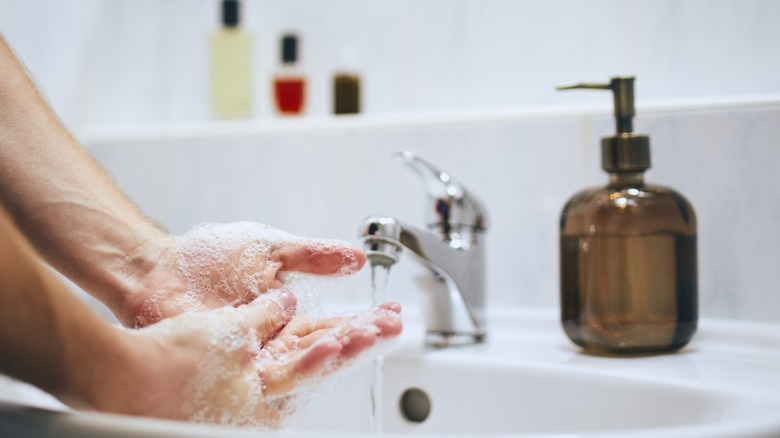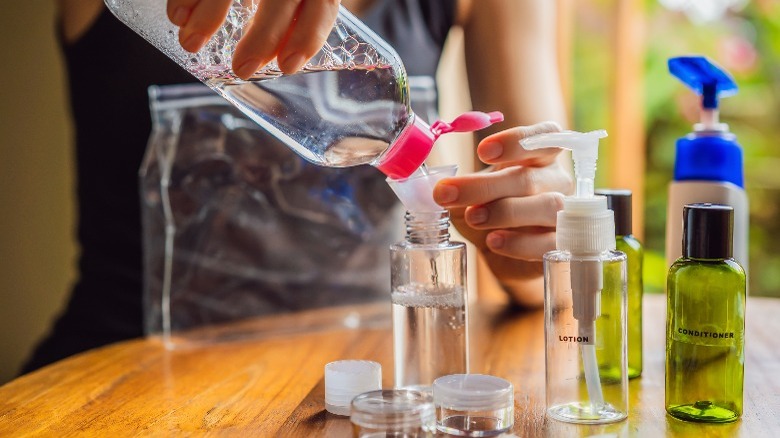Why Your Liquid Hand Soap Gets Watery And How To Fix It Before Guests Arrive
Liquid hand soaps are a delightful addition to daily hygiene routines, offering pleasant scents and a satisfying lather. However, it's common to notice a change in consistency towards the end of the bottle, where the soap turns watery. Two main factors contributing to this phenomenon are air entering the dispenser and changes in the surrounding temperature, which can also affect the soap's consistency.
A small amount of air enters to equalize the pressure whenever you pump liquid soap. Unfortunately, this can cause airborne microbes from the air to enter. These microbes from the air then cause the soap's emulsion formula of the soap base to crack and separate. This causes the soap to become watery. Similarly, a 2011 study published in Applied and Environmental Microbiology found that liquid soap dispensers refilled with new soap are prone to bacteria contamination. So, if you just refilled your old bottle with a soap refill, chances are there's bacteria in it even before it reaches the end of the bottle. This is especially true if you topped off your partially emptied dispenser with new soap. While less common, temperature can also affect the soap's thickness. If the temperature gets hot, the molecules within the liquid move faster, causing its viscosity to diminish and making the liquid soap turn watery.
How to fix a watery liquid soap
A quick solution to make your liquid soap regain its thick consistency is to add salt to it. Create a salt solution by mixing 2 ounces of salt with 6 ounces of water. Dissolve the salt thoroughly and add it in small amounts using a teaspoon until you achieve your desired consistency. This works for liquid soaps with sodium lauryl ether sulfate (SLES), a type of surfactant. Be careful not to add too much; this will ruin your soap and make it lumpy and reduce its viscosity. Aside from ruining its appearance and texture, too much salt will make it lose effectiveness.
You can also thicken liquid soap using thickeners like guar gum, xanthan gum, or hydroxyl cellulose.These are typically used during the soap-making process, but could also be used to remedy an already-made soap that has become too watery. They also work on shampoos and body washes. If these don't help thicken your liquid soap, don't be tempted to use the remaining hand soap to wash your dishes – throw it instead. If you want something thick, why not make foaming soap at home?

